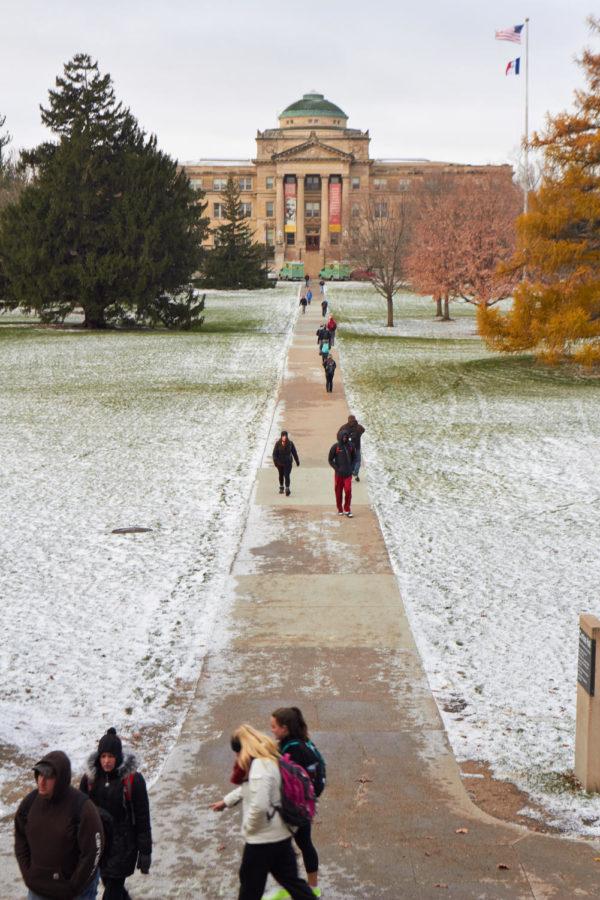Editorial: Winter readiness means more than just clothing, cars
Students make the walk from Curtiss to Beardshear, braving the winds that sweep across Central Campus. The cold snap that hit ISU on Nov. 11 brought the first snow of the winter and has caused many students to turn to CyRide for transportation.
November 14, 2014
Central Iowa experienced a temperature drop earlier this week and Ames’ first winter storm is scheduled to hit on Nov. 15.
While there have been mixed reports of just how bad this winter is going to be, it’s always better to be safe, rather than sorry or end up with a broken tailbone. Slipping on ice might send you wishing for your two front teeth these holidays if you are not prepared.
Because winter seemed to come early this year, it is important for students and other Ames citizens to be begin preparing now for the cold temperatures and dangerous conditions it may bring. Preparing for the weather is not just as simple as remembering to wear winter coats and boots on cold days.
When thinking of winter readiness, one may usually be concerned about the condition of his or car or having the proper clothing. However, there are many other ways to prepare for and educate yourself about winter weather that are often not thought about.
College students are often paying energy bills for the first time in their house or apartment at school. The cost of heating may be shocking or even hard for college students to afford. So people should take steps to keep warm without cranking up the heat.
Covering old drafty windows and doors can stop heat from escaping or the cold from leaking in. Products like longjohns or heating blankets can also you stay warm. Finally, hot drinks and foods can also help.
But winter can be more serious than just expensive bills. One of the silent killers of the winter is carbon-monoxide related deaths. According to www.ready.gov/winter-weather, an average of 430 Americans die each winter because of carbon-monoxide poisoning. This is caused by the influx of gas-powered furnaces and alternative cooking indoors.
A quick fix to this can be purchasing a carbon-monoxide detector at the nearest hardware store. They run around $20 a piece.
Another thing to consider before hanging stockings and roasting chestnuts, is fireplaces. It is important to make sure that traditional chimneys are clean before lighting fires to keep warm this winter. Chimney fires occur when particles from burning wood accumulate on the inside walls of a chimney and then catch on fire.
Chimney fires can be intense and explosive, according to the Chimney Safety Institute of America’s website. They can fill homes with dangerous smoke and cause plenty of fire damage to home. To avoid this, chimneys should be cleaned before use in the winter.
Finally, everyone must understand the weather they are facing this time of year. During the winter, there is a plethora of terminology that is used. Knowing the difference between a winter storm watch and a winter storm warning can literally be the difference between life or death.
At www.ready.gov/winter-weather, there is a list of the different terms meteorologists will use to warn the public about the weather. Being one step ahead of a storm and staying informed is the best way to stay safe during the cold Iowa winters.
So as the temperature drops and the snow starts to fall, students should make sure they are prepared for the dangerous season ahead. Preparing for winter is not all that difficult but it could just save lives or if not, at least save a little money.

















